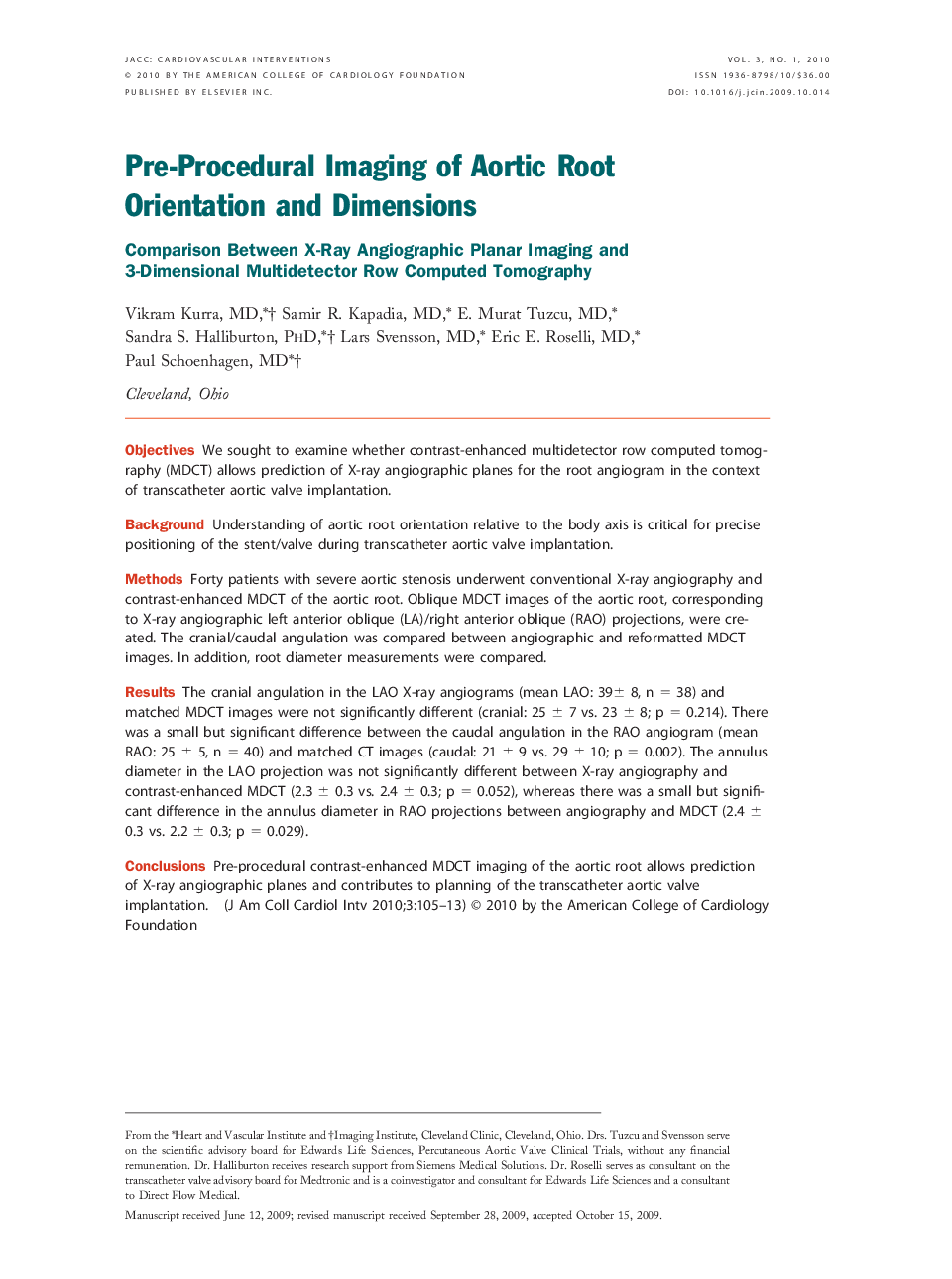| Article ID | Journal | Published Year | Pages | File Type |
|---|---|---|---|---|
| 2941525 | JACC: Cardiovascular Interventions | 2010 | 9 Pages |
ObjectivesWe sought to examine whether contrast-enhanced multidetector row computed tomography (MDCT) allows prediction of X-ray angiographic planes for the root angiogram in the context of transcatheter aortic valve implantation.BackgroundUnderstanding of aortic root orientation relative to the body axis is critical for precise positioning of the stent/valve during transcatheter aortic valve implantation.MethodsForty patients with severe aortic stenosis underwent conventional X-ray angiography and contrast-enhanced MDCT of the aortic root. Oblique MDCT images of the aortic root, corresponding to X-ray angiographic left anterior oblique (LA)/right anterior oblique (RAO) projections, were created. The cranial/caudal angulation was compared between angiographic and reformatted MDCT images. In addition, root diameter measurements were compared.ResultsThe cranial angulation in the LAO X-ray angiograms (mean LAO: 39± 8, n = 38) and matched MDCT images were not significantly different (cranial: 25 ± 7 vs. 23 ± 8; p = 0.214). There was a small but significant difference between the caudal angulation in the RAO angiogram (mean RAO: 25 ± 5, n = 40) and matched CT images (caudal: 21 ± 9 vs. 29 ± 10; p = 0.002). The annulus diameter in the LAO projection was not significantly different between X-ray angiography and contrast-enhanced MDCT (2.3 ± 0.3 vs. 2.4 ± 0.3; p = 0.052), whereas there was a small but significant difference in the annulus diameter in RAO projections between angiography and MDCT (2.4 ± 0.3 vs. 2.2 ± 0.3; p = 0.029).ConclusionsPre-procedural contrast-enhanced MDCT imaging of the aortic root allows prediction of X-ray angiographic planes and contributes to planning of the transcatheter aortic valve implantation.
